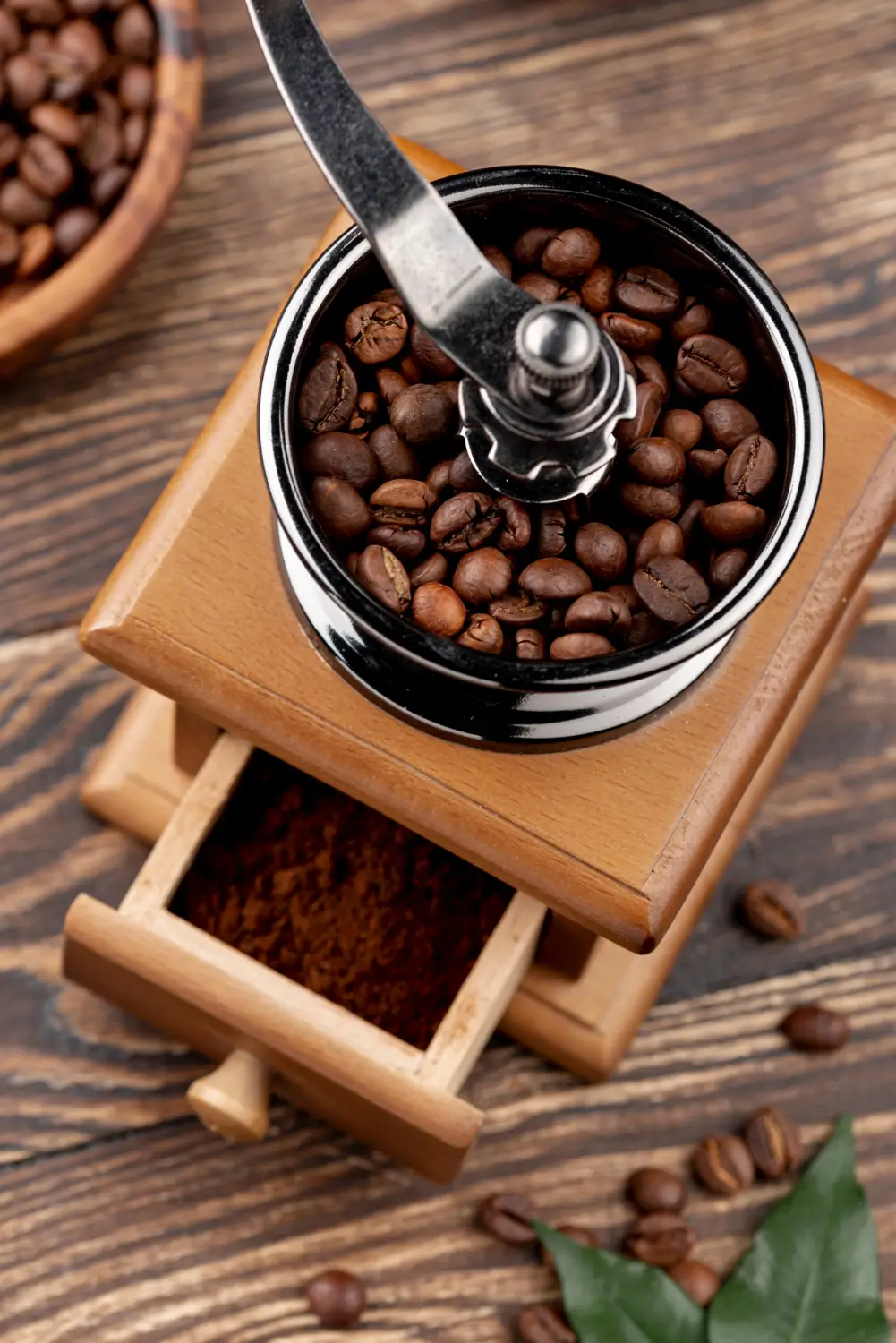If you’re like me, you probably kick off your day with a cup of coffee, or at least grab one sometime before noon. Coffee is a ritual for so many of us around the world, but have you ever really thought about what makes your favorite brew so good? Chances are, you’re enjoying Arabica coffee, the world’s most sought-after variety. Millions drink Arabica beans every day because of their famously superior taste and amazing aroma.
- What are Arabica coffee beans? Discovering their unique identity
- Arabica versus Robusta: a flavor comparison
- Where does Arabica coffee thrive? Optimal growing conditions & regions
- The journey of Arabica: from Ethiopia to your cup (history & spread)
- The economic powerhouse: Arabica’s global impact
- Brewing the perfect cup: applications and methods for Arabica
- Conclusion
In this guide, we’re going to dive into everything that makes Arabica coffee beans so beloved—from their unique flavor profile and ideal growing conditions to their captivating history and huge economic impact. Get ready to really understand that daily cup.
What are Arabica coffee beans? Discovering their unique identity
So, what exactly sets Arabica coffee beans apart from all the others? Let’s take a closer look at what makes them so special.
Defining characteristics of Arabica
When you taste Arabica, you’ll immediately notice its smooth, sweet character. Many describe its flavor with delightful notes of chocolate, nuts, and even fruits like berries. It’s often lighter, less bitter, and incredibly aromatic—a stark contrast to some other coffee types you might encounter. What you’re experiencing is a complex array of flavors that really shift depending on where the beans come from and how they’re roasted. These beans also have a compositional advantage: they contain almost 60% more lipids and twice the sugar compared to Robusta beans.
This rich makeup is exactly what gives Arabica its enhanced flavor, aroma, and luxurious body. Plus, because it has less caffeine and fewer chlorogenic acids than Robusta, you get a much less bitter, less woody taste. Visually, you can spot an Arabica bean by its distinctive oval shape. It typically has one flat side and one curved side, with a noticeable groove running down the flat part.
Generally, the beans inside a coffee cherry are quite uniform in size and shape, which is a good sign. When it comes to growing, Arabica trees love high altitudes, thriving in those elevated environments. This actually helps them produce a wider variety of bean sizes and flavors due to cross-pollination. There’s a trade-off, though: since Arabica has lower caffeine—which acts as a natural pest deterrent—the trees are more susceptible to pests.
Physical properties of Arabica beans
Beyond taste and appearance, Arabica beans also have some interesting physical properties that matter for how they’re handled and processed. For example, a single Arabica parchment coffee bean usually weighs between 1.03 and 1.97 grams, depending on its origin and how much moisture it holds. When dried, these parchment beans have a bulk density of about 0.390 g/mL, and an apparent density of roughly 0.637 g/mL.
If you were to measure the volume of 100 dried parchment Arabica coffee beans, you’d find it ranges from about 17.35 mL (bulk volume) to 27.33 mL (true volume).
Even their mechanical properties are important for processing; the average angle of repose—which is how steep a pile of them can get without collapsing—is around 38.68 degrees. This detail is surprisingly relevant for how coffee is moved and stored.
Arabica versus Robusta: a flavor comparison
So, how does Arabica stack up against its main rival, Robusta? Let’s put them head-to-head and see how their flavors and aromas truly differ.
Flavor profile: Arabica’s nuance
When you sip Arabica, you’re looking for that smoother, sweeter experience, often with delightful notes of fruit, sugar, chocolate, and even florals. It’s a coffee that offers true complexity and a wide range of nuanced flavors. Robusta, on the other hand, is a different beast entirely. It’s known for a more assertive, often bitter taste, bringing forward earthy, nutty, and sometimes even woody or chocolatey notes. You’ll find it less subtle, more direct.
Aroma & composition differences
The aroma tells a similar story. Arabica offers that fragrant, classic coffee scent we all know and love. Robusta, however, can sometimes have a neutral or even a slightly harsh aroma—some folks even compare it to burnt rubber, which gives you an idea of its intensity.
These differences in flavor and aroma really come down to their unique chemical makeups. Remember how Arabica has more sugar and lipids? Those contribute to its sweetness and nuanced fragrance. Robusta, meanwhile, is packed with more caffeine and chlorogenic acids, which lead to its more assertive, bitter, and sometimes less pleasant aroma.
| Feature | Arabica | Robusta |
|---|---|---|
| Flavor Profile | Smooth, sweet, nuanced, notes of fruit, chocolate, nuts, florals | Strong, bitter, earthy, nutty, sometimes woody or rubbery |
| Aroma | Fragrant, aromatic, classic coffee scent | Neutral, sometimes harsh, “burnt rubber” notes |
| Sugar Content | Higher (approx. 60% more than Robusta) | Lower |
| Lipid Content | Higher (approx. double that of Robusta) | Lower |
| Caffeine Content | Lower (typically 1.5% by weight) | Higher (typically 2.5% or more by weight) |
| Chlorogenic Acids | Lower | Higher |
| Bean Shape | Oval, one flat side, one curved side, distinct groove | Round, often smaller |
| Growing Altitude | High altitudes (600-2,000 meters) | Lower altitudes (sea level to 600 meters) |
| Pest Susceptibility | More susceptible due to lower caffeine | More resistant due to higher caffeine |
| Market Share | Dominant (60-70% of global production) | Smaller share (30-40% of global production) |
Where does Arabica coffee thrive? Optimal growing conditions & regions
Have you ever wondered where those delicious Arabica beans actually come from? Let’s explore the specific environments and regions where this beloved coffee truly thrives.
The ideal environment for Arabica
Arabica is a bit particular about its living conditions, preferring a very specific set of circumstances to really flourish. It thrives at higher altitudes, typically between 600 and 2,000 meters (or 2,000 to 6,000 feet) above sea level, depending on the latitude. The sweet spot for temperature is usually 15°C to 24°C (59°F to 75°F). You’ll also find Arabica needs consistent rainfall, somewhere between 60 to 100 inches (1,500 to 2,500 mm) annually.
The soil matters too: it should be well-drained, rich in organic matter, and have a pH between 5.0 and 6.0. Many growers prefer volcanic soil because it’s full of minerals the plants love. Additionally, Arabica plants often need partial shade to shield them from harsh direct sunlight and help the soil retain its moisture. Moderate humidity is also a must; sometimes growers even use misting systems to help out.
Global hotbeds of Arabica cultivation
So, where in the world do these conditions align perfectly? Arabica coffee truly thrives within what we call the “Coffee Belt”—a geographical zone circling the equator. Here are some of the main regions where you’ll find incredible Arabica being cultivated:
- Africa: This includes Ethiopia, the birthplace of coffee, along with Kenya, Rwanda, Uganda, Tanzania, and Burundi.
- South America: Brazil, the world’s largest coffee producer, and Colombia are major players here.
- Other regions: You’ll also find Arabica growing wonderfully in parts of Central America and Southeast Asia.
The journey of Arabica: from Ethiopia to your cup (history & spread)
Every cup of Arabica tells a story stretching back centuries. Let’s trace the incredible journey of this coffee, from its wild origins in Africa all the way to your morning mug.
Origins in Ethiopia and early cultivation
Our story begins in the southwestern highlands of Ethiopia. Here, around the 7th century, Arabica coffee grew wild, and local communities were already consuming its stimulating beans. From these humble beginnings, the beans made their way across the Red Sea to Yemen and lower Arabia. It was here, by the 15th century, that Arabica first saw commercial cultivation. The bustling port city of Mocha in Yemen quickly became central to the early international coffee trade. You might not be surprised to hear that the name “Arabica” itself comes from this strong association with Arabia, where its cultivated journey truly began.
Global expansion and influential figures
From the Middle East, coffee soon made its way to Europe in the 17th century, with Venice serving as a vital entry point. Think about that—Venice, a hub of trade and culture, became where many Europeans first experienced coffee! From Europe, Arabica then traveled further afield, establishing new plantations across Asia—places like Java, for example—and eventually making its way to the Americas. And here’s a fascinating bit of history: a true hero in this global expansion was an Indian monk named Baba Budan. He famously—and perhaps a bit daringly—smuggled seven coffee seeds from Yemen to India, breaking the Arab monopoly and significantly helping Arabica spread its roots beyond the Middle East.
The economic powerhouse: Arabica’s global impact
Arabica coffee isn’t just about your morning brew; it’s a huge economic force that impacts countries and countless livelihoods around the globe. Let’s break down just how influential it truly is.
Market dominance and growth
First off, Arabica coffee totally dominates the market. In 2023, the Arabica coffee market was already valued at roughly $33.4 billion, and get this—it’s expected to shoot up to $53.6 billion by 2032, showing a strong compound annual growth rate of 5.5%. This growth really comes down to us, the consumers, wanting more premium, specialty coffee. You see this especially in markets like Europe and North America, where people prioritize that superior flavor and aroma. Arabica consistently makes up about 60-70% of global coffee production, making it the most widely grown and consumed coffee out there.
Livelihoods and export significance
Beyond the big market numbers, Arabica coffee is absolutely vital to the economies of many developing countries across Latin America, Africa, and Asia. Take Brazil, the world’s largest coffee producer, for instance—a huge chunk of its agricultural income comes directly from Arabica. Or consider Ethiopia, where around 15 million smallholders depend on coffee for their livelihoods, and it accounts for nearly a third of the country’s national export earnings. Honduras Coffee is an economic pillar, generating nearly a quarter of the country’s export income, while in neighboring Nicaragua more than 15% of the labor force works in coffee production.
Even in Uganda, the coffee sector supports about 1.7 million households and contributes almost 20% to national export earnings. It’s pretty staggering when you realize that roughly 25 million small producers worldwide rely on coffee farming; in Brazil alone, over five million people are employed in this sector. This just shows you how labor-intensive Arabica production is, supporting millions of farming families and boosting rural economies. It’s a significant source of foreign exchange, which helps governments fund public services and drives socioeconomic development. What’s more, efforts like Fair Trade and Rainforest Alliance certifications are helping improve yields and quality while ensuring better market access for these producers, reinforcing Arabica’s role as an economic asset.
Brewing the perfect cup: applications and methods for Arabica
Now that you know all about Arabica, how do you actually make the most of those fantastic beans? Let’s talk about the best ways to brew Arabica to really bring out its wonderful flavors.
Versatile applications for Arabica
Arabica’s light, sweet flavor, bright body, and low acidity make it quite versatile. Here are some of its common uses:
- Hot brews: This is where Arabica really shines! Whether you use a drip coffee maker, a pour-over, or a French press, these methods are excellent for highlighting the coffee’s natural flavors.
- Specialty drinks: While often associated with filter brews, Arabica beans are also great for espresso-based drinks, though you might typically find them more in your standard filtered coffee.
- Cold brew: If you love a smooth, low-acidity coffee, Arabica is fantastic for cold brew. Just steep it in cold water for an extended period, and you’ll have a deliciously mellow drink.
Preferred brewing methods for optimal flavor
To get the absolute best out of your Arabica beans, here’s what I recommend for some popular brewing methods:
- Drip coffee: For a perfectly balanced cup, aim for a medium grind and a water-to-coffee ratio of 1:15 to 1:18.
- Pour-over: You’ll want a medium-fine grind here. This method gives you precise control, which is essential for a clean, wonderfully flavorful cup.
- French press: Go with a coarse grind for your French press. This will give you a full-bodied, rich coffee with a delightful, pronounced mouthfeel.
- Aeropress: This is a cool one, as it combines features of both espresso and pour-over. The result is a remarkably smooth and less acidic cup, which many people adore.
Conclusion
As we’ve seen, Arabica coffee beans are truly special. Their delicate flavors, fascinating history, immense economic impact, and broad versatility make them the world’s most cherished coffee variety. We’ve explored everything from their distinct taste profile and specific growing conditions to how they became a global phenomenon and their vital role in countless economies.
Now that you know all about them, I encourage you to explore different Arabica origins—you’ll be surprised by the variety of flavors! Maybe try experimenting with a new brewing method to unlock even more nuances. What’s your favorite Arabica experience? Share it in the comments below! Ready to find your next perfect cup? Explore our curated selection of premium Arabica coffee beans today and discover the rich world of flavor waiting for you.









